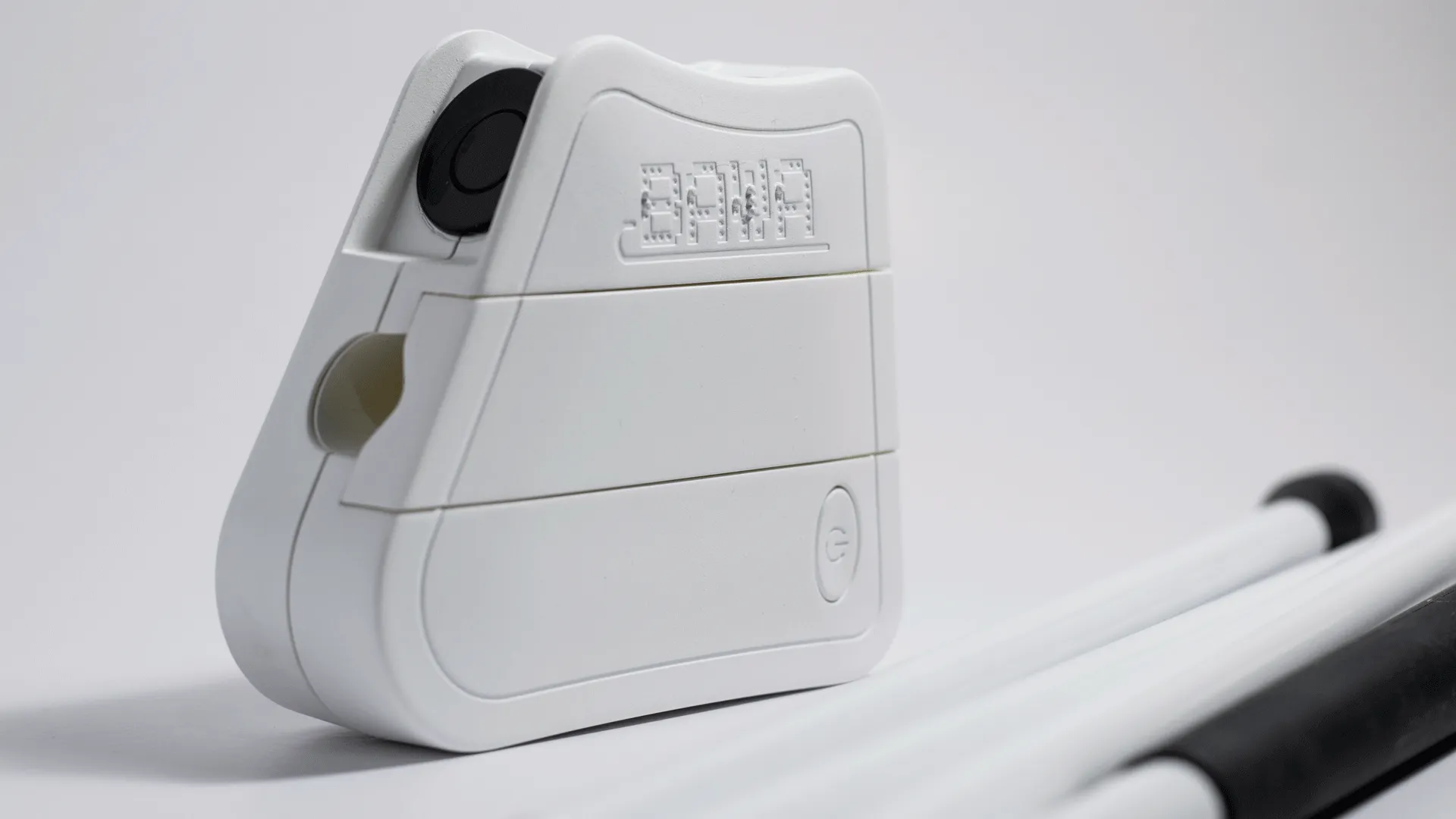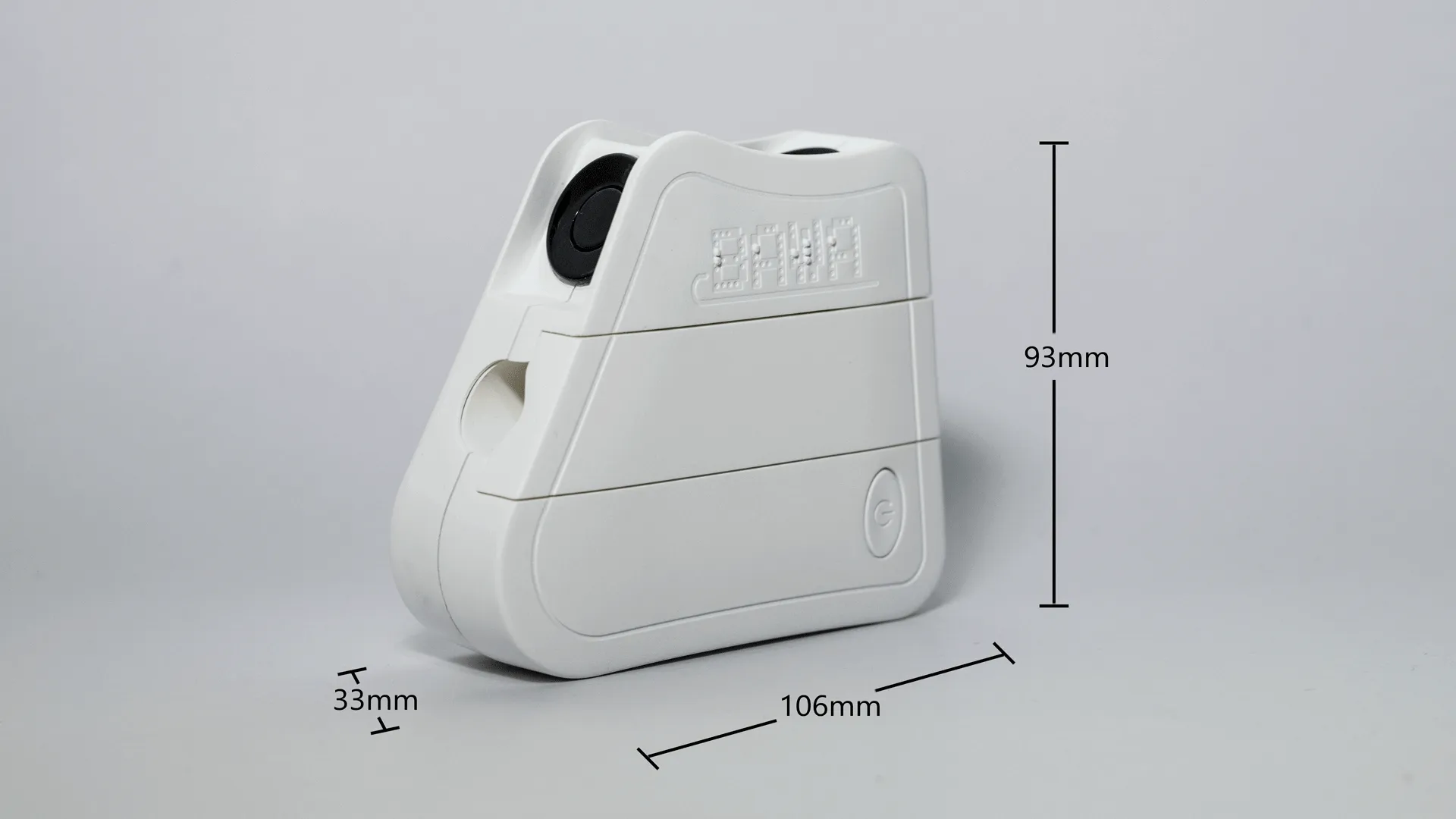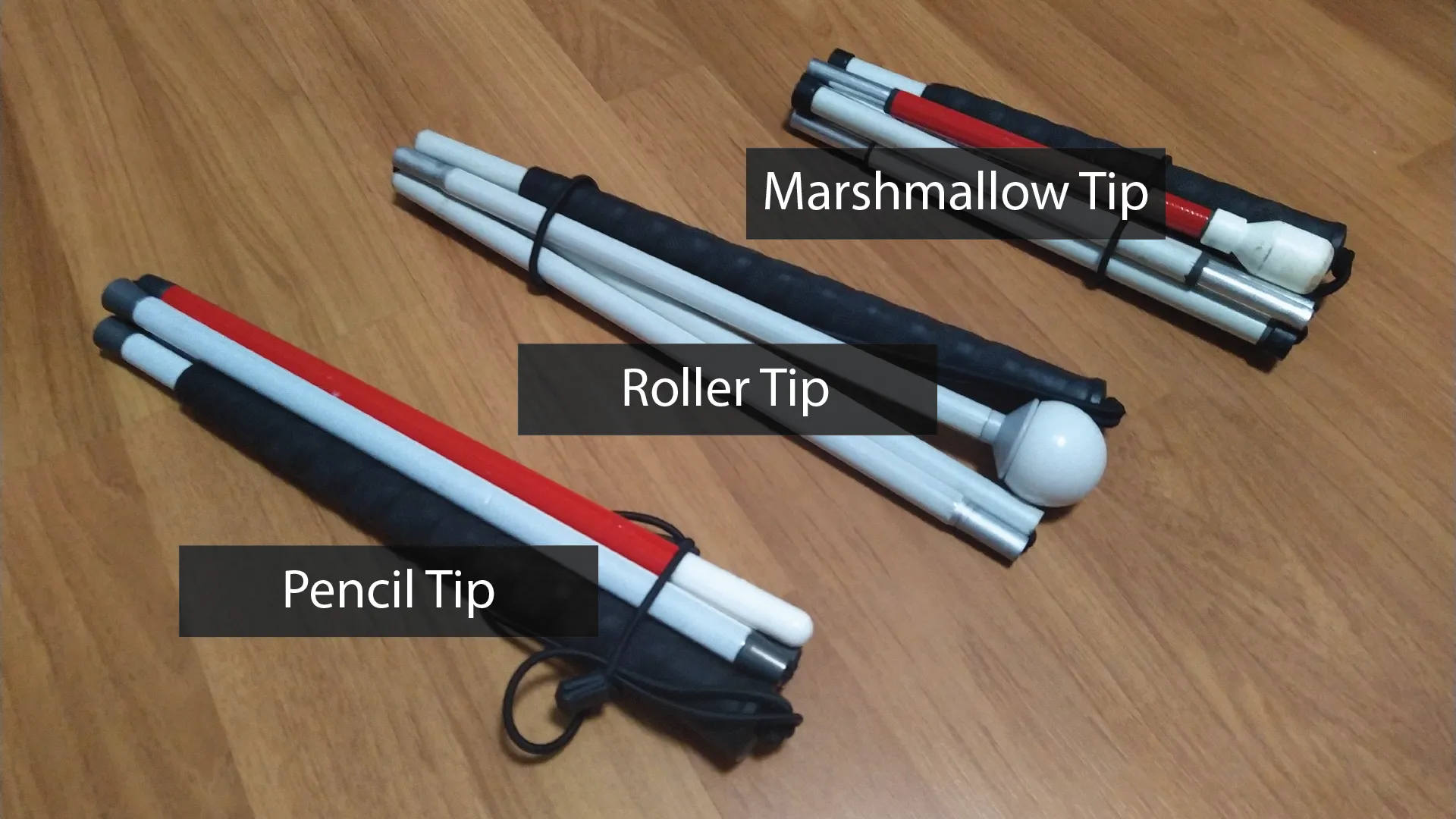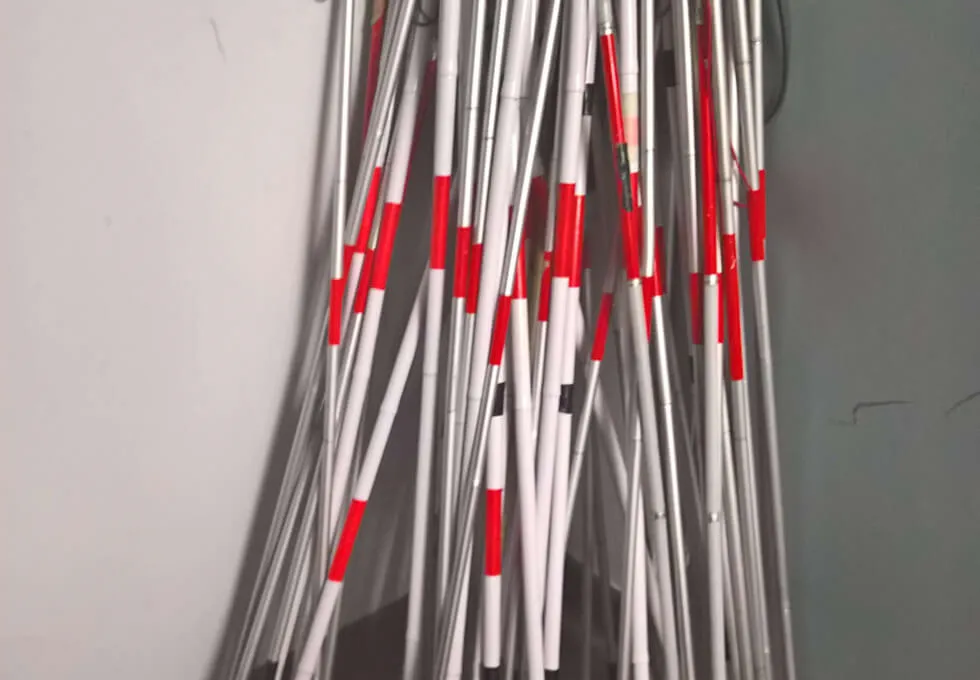It’s important to keep in mind that blind canes are available in various materials, and come with different tips and colour codes. Selecting the right one for you will depend on a number of factors, including your level of usable vision, as well as other physical and environmental considerations. But don’t worry, with the help of a professional, you’ll be able to find the perfect cane to fit your specific needs.
In this blog post, we’ll discuss the different types of visual impairment, canes, and tips available, and provide tips for choosing and caring for your cane.

Types of Visual Impairment
First off, let’s explore the varying degrees of visual impairment. Visual impairment usually means that both eyes are experiencing a significant loss of vision that cannot be fixed with glasses. The two main categories of visual impairment are:
Low Vision – These people are partially sighted, which means they can see to varying degrees but have a visual acuity of 20/70 or poorer. Experiencing low vision to the point that it interferes with your daily life can be incredibly frustrating. People with low vision may require special equipment and/or modifications.
Most people described as “legally blind” have some vision, but are experiencing enough vision loss that they are entitled to government or private agency service. Their vision is usually around 20/200 or less. The degrees of visual impairment are:
- Moderate Visual Impairment: 20/70 to 20/160
- Severe Visual Impairment (Legally Blind): 20/200 to 20/400
- Profound Visual Impairment (Legally Blind): 20/500 to 20/1000
Those with profound visual impairment are often able to perceive the difference between light and dark, or daylight and night time. Some of these people can recognize forms or where the light is coming from, which allows them a bit more flexibility than those who are totally blind.
Total Blindness – These people have no light perception and are unable to see forms. Around 85% of people with eye disorders have some remaining sight, while only 15% of them are totally blind. Being totally blind is the most difficult visual impairment to live with, but also the rarest.
Types of Canes for the Blind
There are three main types of canes for the blind: mobility, identity, and support canes.
Mobility canes are the most widely used and come in both solid and foldable designs. They are primarily used to detect obstacles and guide the user while walking.
Identity canes are particularly useful for those with low vision who can still see in some situations. They are typically smaller in diameter, often brightly coloured or have identifying symbols, indicating the user’s visual impairment.
Support canes are sturdy walking canes with substantial handles meant to support your weight that provide additional support and stability for those with more significant mobility issues.
Understanding the differences between these types of canes can help visually impaired individuals choose the one that best suits their needs.
Types of Tips for Your Blind Cane
Canes can also have different tips, each designed to help users in different environments. Some types of white cane tips include pencil, roller, marshmallow, and metal glide.
The cane tip is an essential part of your mobility aid, allowing you to navigate different terrains and perform various movements. You can choose from a range of tips depending on your needs and preferences. For instance:
The pencil tip is thin, light, and provides detailed feedback, but it may get stuck in sidewalk cracks.
The roller tip is heavier and rolls smoothly over surfaces, providing less detailed feedback but reducing the risk of getting stuck.
The marshmallow tip is thicker and heavier, providing less sensitivity but rarely getting stuck.
The metal glide tip is smooth and lightweight, making it easy to move across different surfaces.
“While I’ve had to face some challenges in life due to my blindness and hearing impairment, I’ve also been very blessed in many ways. I have a loving husband, supportive family and great friends.”
Bernadette Bannisters, Positive Living Blog
How to Choose a Cane
Choosing the right cane is crucial for anyone with visual impairment. It’s essential to consider factors like the individual’s level of vision, mobility needs, and the environment in which the cane will be used. Canes should be adjusted to the user’s height, and the handle should be comfortable to grip.
For more information on how to choose the correct length of cane, read our other blog post here.
Tips for Caring for Your Cane
Taking care of your cane is also important to ensure it lasts as long as possible.
Here are some tips for caring for your cane:
- Be sure to carry a spare tip with you, as they can wear out quickly and become lost.
- Keep your cane clean and free of debris to ensure optimal performance.
- Consider adding reflective tape to your cane, especially if you are walking around at night. This will help others see you and avoid any accidents.
- You may also want to add a unique mark to your cane, such as your name in braille or another identifier, to help you quickly and easily identify your own cane.
- Finally, it’s always a good idea to have a backup cane on hand in case your primary cane is lost or unexpectedly damaged.
We’ve all been there and understand that canes do wear and tear and some of you would prefer using an electronic or smart cane, so we recommend that you read further down a little.
BAWA Cane is the Clip-on Device for White Canes
The BAWA cane is a clip-on device that turns any white cane into a smart cane, providing an added layer of safety and functionality. With features like obstacle detection, fall detection, and GPS tracking (via BAWA Cane app), it’s an excellent investment for anyone with a white cane.
More information about BAWA Cane here.




In conclusion, canes are a vital tool for people with visual impairment, and there are many different types and tips available to meet specific needs. By choosing the right cane and taking good care of it, individuals with visual impairment can gain greater independence and confidence in navigating their surroundings. And for those worried about wear and tear, consider investing in a BAWA Cane to take your cane usage to the next level.
Till next time.
Facts and Guide
How to care for my blind elderly parent or relative?
Startup Journey
BAWA Tech nominated for IET Impact in Society Awards
Facts and Guide
How to pick the correct length of white cane?




As someone who is visually impaired, I found your article to be invaluable. Your explanation of the different types of canes and their features was particularly helpful. I appreciate your dedication to educating and informing others on this important topic.
Great post but I was wanting to know if you could write a litte more on this subject? I’d be very grateful if you could elaborate a little bit more. Appreciate it!
The amount of effort that you put into it was very impressive to observe. Despite the fact that the picture is appealing and your writing style is elegant, it appears that you are concerned about the fact that you ought to be providing the following content. In the event that you take care of this hike, I will almost definitely return to come back and read more of your work.
I am uncertain of the source from which you obtain your information; however, the subject matter is commendable. I require further study or comprehension in this area. Your magnificent information was precisely what I was seeking for my mission.
Your article was indeed entertaining. I look forward to further agreeable contributions from you.
Hey, cool post!
Here, I’ve read some really great content. It’s definitely worth bookmarking for future visits. I’m curious about the amount of work you put into creating such a top-notch educational website.
I wonder how much work goes into creating a website this excellent and educational. I’ve read a few really good things here, and it’s definitely worth saving for future visits.
This site is fabulous. The radiant material shows the maker’s commitment. I’m dumbfounded and anticipate more such mind blowing posts.
I always leave this blog feeling inspired and motivated to make positive changes in my life Thank you for being a constant source of encouragement
You actually make it appear really easy together with your presentation however I find this topic to be really something
that I feel I’d by no means understand. It sort of feels too complicated and extremely huge
for me. I’m looking ahead for your subsequent put up, I’ll attempt to get the cling of it!
Very interesting subject, appreciate it for posting.
I’ve read several just right stuff here Certainly price bookmarking for revisiting I wonder how a lot effort you place to create this kind of great informative website
Can I just say what an aid to find somebody who really knows what they’re speaking about on the internet. You undoubtedly know the right way to carry a problem to light and make it important. More folks must read this and understand this side of the story. I can’t believe you’re no more widespread since you definitely have the gift.
This is my first time pay a quick visit at here and i am really happy to read everything at one place
What i don’t realize is actually how you are not really much more well-liked than you may be now. You’re so intelligent. You realize thus considerably relating to this subject, made me personally consider it from numerous varied angles. Its like women and men aren’t fascinated unless it’s one thing to do with Lady gaga! Your own stuffs outstanding. Always maintain it up!
I happen to be commenting to let you understand of the brilliant experience my cousin’s girl encountered reading yuor web blog. She even learned such a lot of things, including what it’s like to possess a great coaching character to get other individuals smoothly gain knowledge of selected hard to do subject areas. You actually surpassed our own expected results. Thank you for offering these informative, dependable, explanatory and also unique guidance on that topic to Jane.
I’ve been browsing online greater than 3 hours lately, yet I never found any attention-grabbing article like yours. It¦s lovely worth enough for me. Personally, if all site owners and bloggers made excellent content material as you probably did, the web might be much more helpful than ever before.
Hello. This article was really fascinating, especially because I was searching for thoughts on this subject last week.
This website is my breathing in, really good style and perfect written content.
Pretty nice post. I just stumbled upon your blog and wished to say that I have really enjoyed surfing around your blog posts. After all I will be subscribing to your feed and I hope you write again soon!